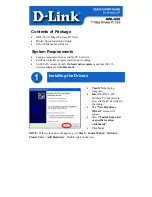
7-1
8000-A2-GB21-20
November 1997
IP Filtering
7
Overview
A filter is a useful mechanism and can be used to:
Secure a network by implementing security rules (policies)
Prevent unauthorized network access without making authorized access
difficult.
By default, filtering is not active on the HotWire DSLAM system. However, you
can enable filtering to selectively filter source or destination packets being routed
through the MCC or DSL cards. Appendix B,
IP Filtering Configuration
Worksheets
, provides worksheets to help you plan and record your filter
configurations.
This chapter provides an overview of packet filters and describes why you may
want to set filters on your network.
What is a Filter?
An IP filter is a rule (or set of rules) that is applied to a specific interface to
indicate whether a packet can be forwarded or discarded.
A filter works by successively applying its rules to the information obtained from
the packet header until a match is found. (Host rules have precedence over
network rules.) The filter then performs the action specified by the rule on that
packet, which can be either to forward or discard. If the packet header
information does not match any of the rules, then the user-specified default filter
action is performed. The filter does not change any state or context, and the
decision is made based only on the packet contents.
















































